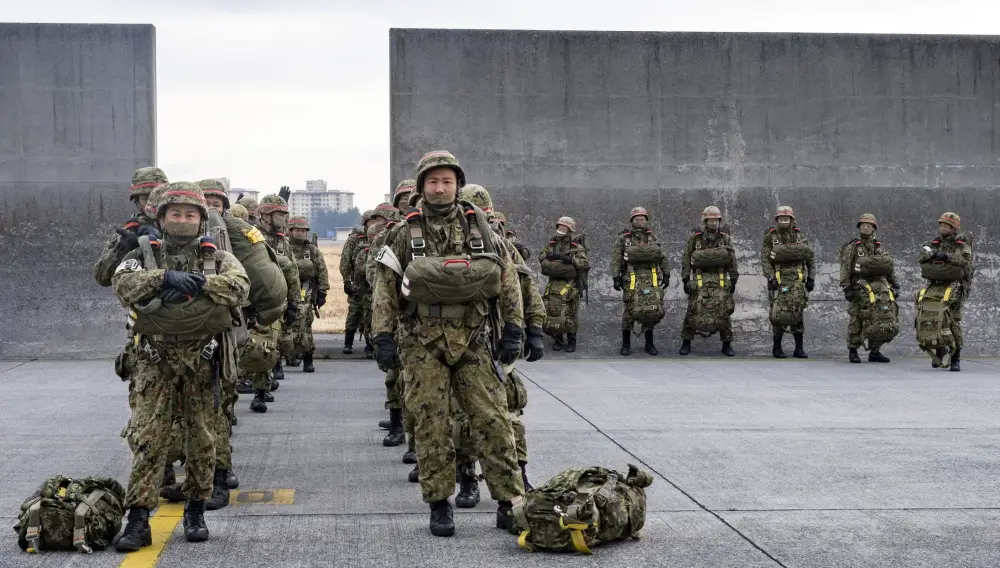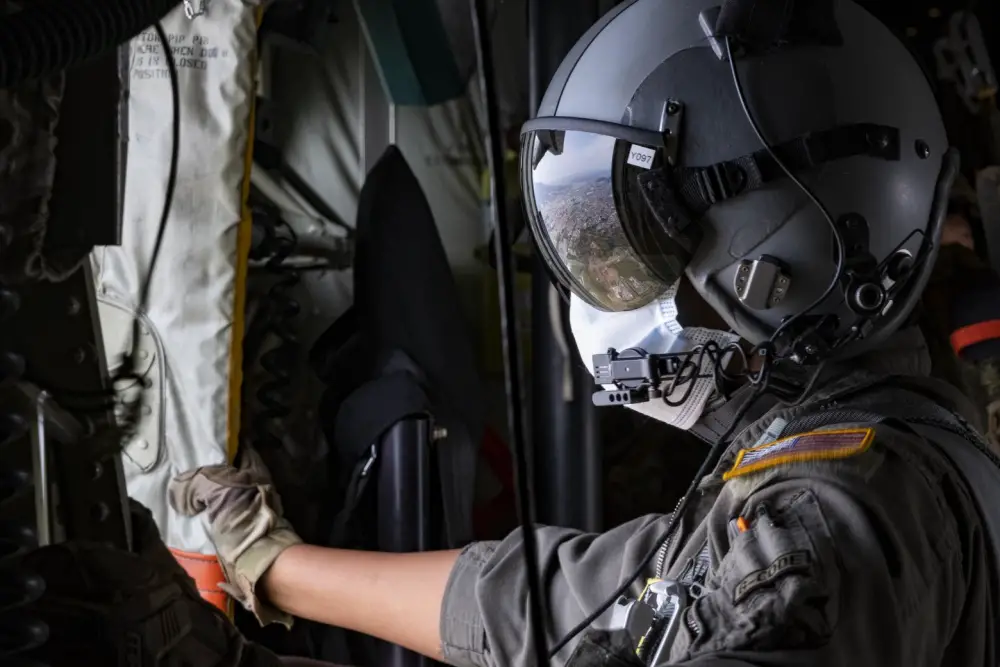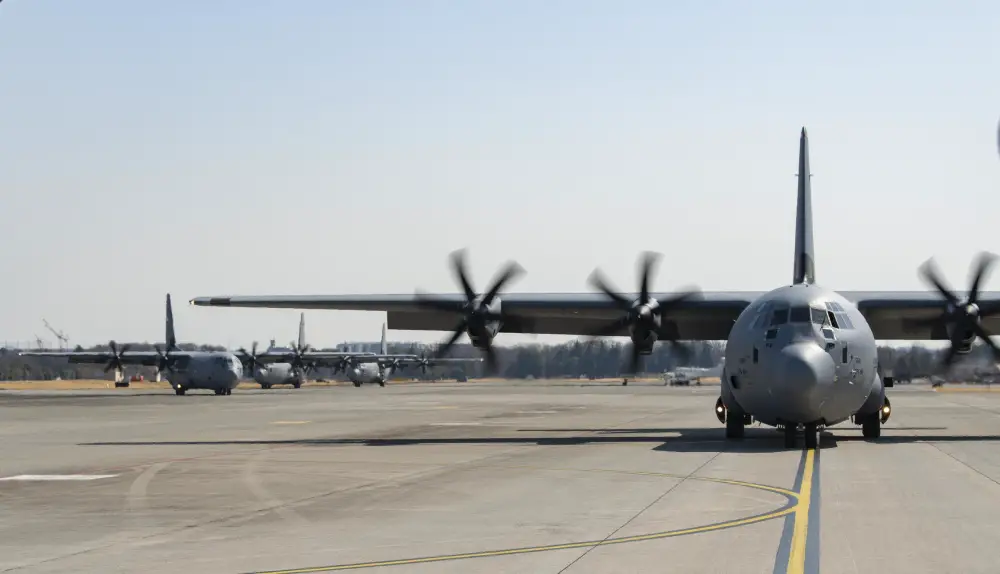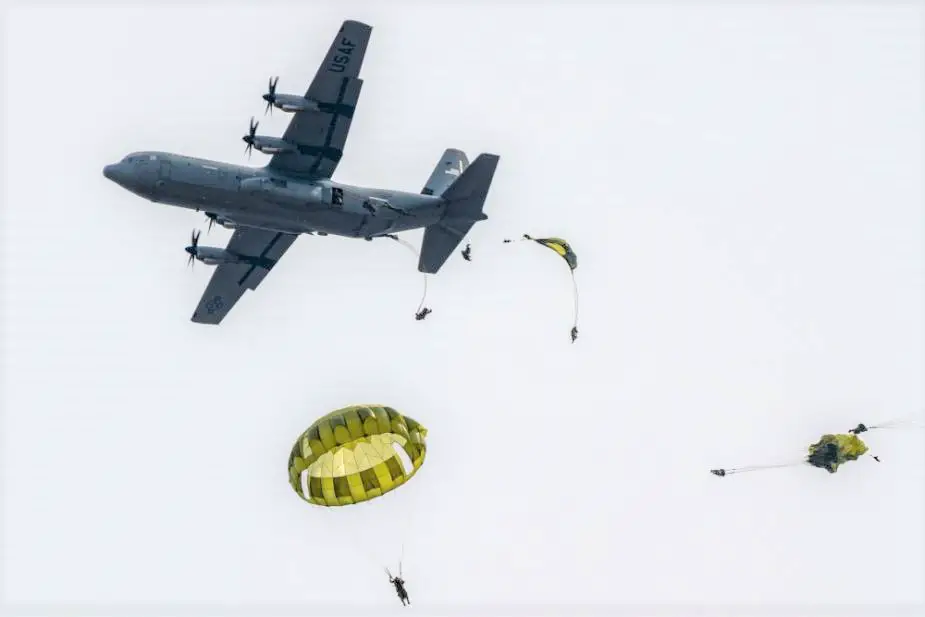In the bright Japanese morning sun, stretched across the flightline, more than 500 Japan Ground Self-Defense Force members talk, rehearse jump procedures and shimmy parachute packs onto their backs. All the while, U.S. Air Force Airmen prepare 12 C-130J Super Hercules aircraft for a surge unlike any other on record. The 374th Airlift Wing supported the Japan Ground Self-Defense Force (JGSDF, 1st Airborne Brigade, for the largest static-line personnel jump and cargo drop between the U.S. and Japan, for exercise Airborne 21, March 9 to 11. During the exercise, C-130Js launched from Yokota Air Base carrying the JGSDF soldiers, and conducted a successful air assault at the Combined Arms Training Center Camp Fuji, Japan, drop zone, followed by a cargo airdrop of 134 container delivery system bundles for the JGSDF troops on the ground, two days later.

The first day of history in the making for the U.S. and Japan partnership was full of energy, excitement and critical focus. An operation of this scale needs an all-hands-on-deck approach and could not have been accomplished without the support and dedication of many Yokota Airmen. The 374th Maintenance Group spent countless hours overcoming a variety of maintenance production challenges in the weeks prior to the surge in order to provide a maximum number of mission ready aircraft while simultaneously continuing to maintain local flying production commitments, said Maj. David Perkins, 374th Aircraft Maintenance Squadron operations officer. Over the course of three days, the JGSDF brought the CDS bundles to the 374th Logistics Readiness Squadron Combat Mobility Flight docks to store them until they were ready to load on the C-130’s.

“This was not an overnight effort; to generate more than 80 percent of Yokota’s C-130J fleet required months of extensively planned logistics for the aircraft to be available, as well as planning and orchestration of the aircraft parking plan, and proper resourcing of aircraft configurations in order to make the mission happen,” said Maj. David Perkins, 374th Aircraft Maintenance Squadron operations officer. “For exercise Airborne 21, maintainers stepped up to the plate to generate 12 C-130J aircraft, ensuring a well-coordinated, multi-day, bilateral airdrop as a demonstration of airpower and a deterrence capability that is unmatched.”

With the aircraft primed by the maintainers, and fully loaded with the CDS bundles, the 36th AS loadmasters went over checklist procedures to secure the cargo for air drop. To increase bundle delivery capabilities, the 730th Air Mobility Squadron provided forklifts to be used to transport the equipment to the C-130’s. The work done during the download and upload of the bundles resulted in zero malfunctions for the flight. All of the hard work and attention to detail by the 347th AW Airmen, in all facets of this operation, from aircraft maintenance to bundle checks, to loading procedures, to the facilitation of getting over 500 JGSDF personnel on base, guaranteed this historic operation was a total success, said Espinoza. This operation furthered our capabilities to provide regional security in the Indo-Pacific.
